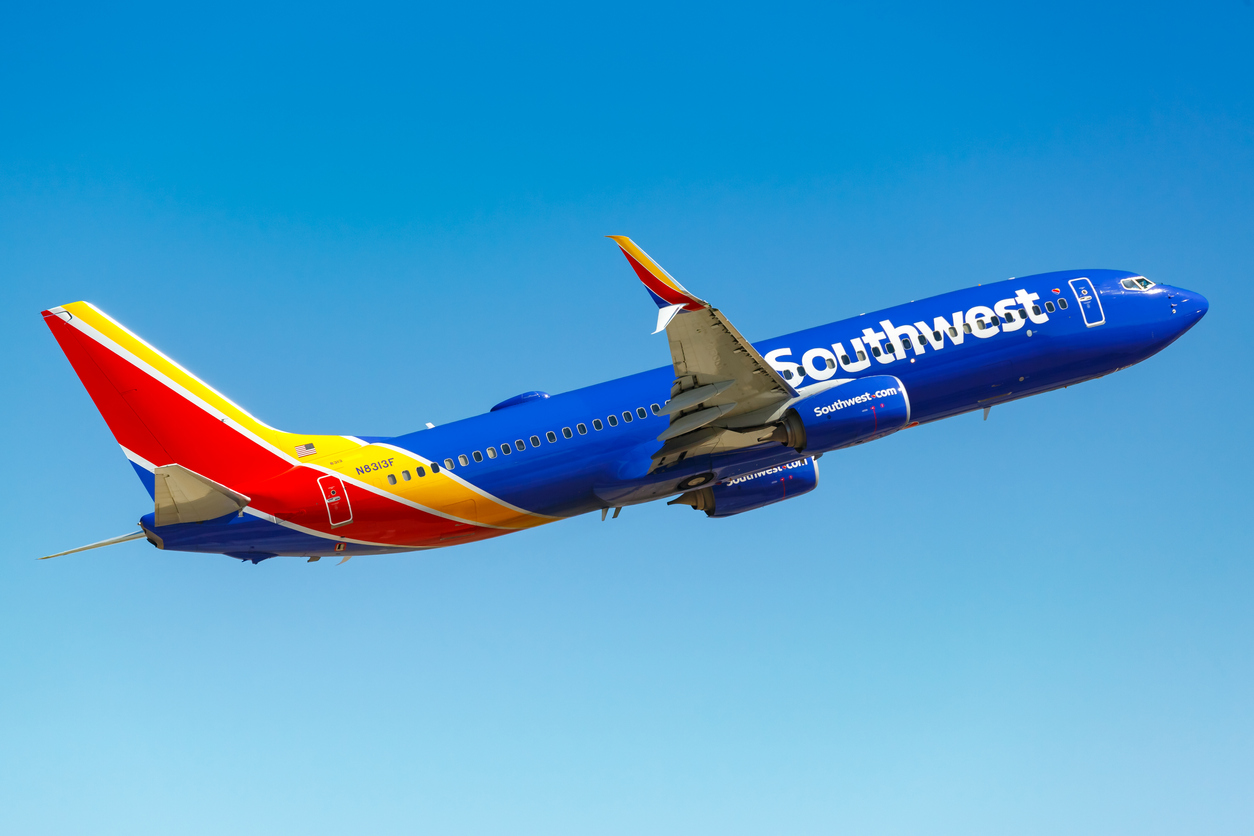Southwest’s chief administration & communications officer on December disruption
Linda Rutherford speaks on the airline’s communications response to Christmas travel issues.

Linda Rutherford is chief administration & communications officer for Southwest Airlines.
Learning from failure is one of the greatest lessons in life. Some of the greatest comebacks in history are rooted in taking a hard look in the mirror, taking accountability, and doing what’s required to not repeat your failures of the past. When you are a for-profit enterprise, you have rules, policies and processes for safety, reliability and accountability.
As the chief administration & communications officer for Southwest Airlines, part of my responsibilities include nurturing the company’s reputation and guiding crisis response efforts when something goes wrong. The last week of December 2022, our operation failed to get nearly 2 million travelers to their intended destination. This disruption was unprecedented, not only in my 31-year career at Southwest, but in our history as an airline.
What went wrong
What began as a widespread winter storm quickly turned into a massive operational disruption for Southwest, and our lack of ability to recover was an outlier in the industry. The weather was worse than predicted, and our advance planning for winter operations at several of our locations quickly became unviable. Our larger locations (including Denver and Chicago), along with other cities across our network, were experiencing various issues coming out of the extreme weather, with everything from deicing capabilities to passenger jet bridges that were deemed inoperable when hydraulics had frozen in the harsh conditions. The culmination of these issues led to large-scale, close-in cancellations that degraded the overall operation.
It was not one thing that led to our situation; instead, our ongoing internal review has shown it was a series of events that we’ll need to continue to break down and analyze. In addition to challenges in our weather-impacted locations, early reviews have revealed challenges with managing our waves of close-in cancellations, bottlenecks in data processing, and a deficiency of clear escalation procedures. We’ve taken immediate steps to correct some of our shortcomings, as our internal and external reviews guide us in longer-term solutions.
The success of a busy airline is the intricate symphony of multiple systems, people, and tools working in tandem. A little background — Southwest works with three key systems: the flight network, the aircraft network, and the crew network. Each must stay in sync when changes are made to any one; if they don’t, conditions can worsen. As the situation escalated in December and as cancellations grew, our crew scheduling function struggled to keep up with the overwhelming volume of changes and resulted in individual crew member assignments not being updated in a timely manner. Without updated crew member schedules, the software couldn’t reassign crew members to flights, so we turned to manual processes that further contributed to disruptions for our customers and our employees.
The communications response
So, as a communications leader … what do you do? Overall, our communications approach contained three key efforts: Acknowledge the event and its impact; apologize for the inconveniences and disruption; and act on lessons learned to reduce the risk of this happening again.
Our effort began with updates on pure recovery. We shared the stats of cancelled and delayed flights, solutions to reset the network and information on what a customer should do if his/her flight was cancelled. We posted both media and employee content across all of our channels to keep stakeholders informed while working with Southwest’s senior leaders to figure out the root causes of the disruption.
Without having all of the information, other entities jumped in to hypothesize as to what caused the operation to “melt down.” Unions, government agencies, and airports shared their perspectives — some within hours of the issue emerging. We continued to communicate with employees, customers and outlets across the country to counter premature cause and effect stories by having both our CEO and COO explain the analysis effort that we launched, including:
Our Board of Directors forming an Operations Review Committee to oversee management’s response efforts.
- Internal reviews of processes, technology and tools.
- Asking a third-party consulting firm (Oliver Wyman) to do its own external review of the operational disruption.
With nearly 2 million people whose travel plans were cancelled or severely delayed, the communication effort had to quickly pivot to how we were going to respond to our customers and employees. We began a series of efforts including:
- Public and internal apologies with details for next steps.
- Handling refunds, reimbursements and luggage recovery efforts within the government-mandated timelines.
- Providing gestures of goodwill to both customers and employees to humbly apologize for the inconvenience and disruption.
Chasing narratives
Along with understanding the root causes of the event and getting the operation back on track, we had a number of narratives to chase.
First, was the issue our technology?
To set the record straight, our crew scheduling software didn’t stop working during this event. However, the velocity and high number of changes in both our flight and crew networks over multiple days limited the ability to process the large volume of schedule alterations using automation. And that led to manual processes that further impacted our ability to quickly recover.
Second, was it our point-to-point network?
The fact of the matter is that our flight activity has been at or near the same levels for months, with high reliability. So, what happened can’t solely be attributed to our point-to-point network. We’ve proven that we can operate the schedule we’ve published and still respond to irregular operations, such as weather and ATC outages.
Third, was the issue staffing?
In 2022 alone, we added more than 11,600 employees, and we have been purposeful in increasing our ratio of employees to aircraft coming out of the pandemic. We had solid work bids across all work groups for the holiday period and were well positioned with the holiday staffing assigned.
So, where do we go from here?
Immediately:
- We identified and trained a group of employees who can provide surge staffing during extreme weather events to assist crew scheduling and can be mobilized via a new notification process.
- We established an objective set of performance criteria in the form of an upgraded dashboard that will help leaders determine when to escalate an operational situation.
- GE, who provides many airlines with their crew optimization software, has already provided a solution that is in testing to help any airline more efficiently work a backlog of broken crew schedules.
- We enhanced and will continue to add functionality to our existing tools for crew members to communicate electronically to crew scheduling during irregular operations.
- We also implemented organizational changes designed to improve coordination and communication between the Network Operations Control (NOC), Network Planning, and Crew Scheduling teams,
- We are in the process of a thorough review of our readiness and capacity to manage severe winter operations, ensuring we prioritize employee safety during extreme or extended winter operations; that will include evaluating new tools and equipment and examining current process improvements.
While no one at Southwest is proud of what happened, we have seen evidence of internal pride emerging as we took care of disrupted customers – stories were shared on social media of our off-duty employees delivering meals to those working; pilots buying and handing out coffee to customers waiting in gate areas; headquarters employees signing up to be trained on internal systems to put more manpower behind our refunds and reimbursement effort. And, most of all, our employees providing great hospitality on our flights through the recovery period that last week of December.
We know we’re not perfect; there’s a saying that character is revealed by what a person says and what a person does. Same goes for a company. We know we have work to do to repair our trust, but we are committed to being America’s most loved and most reliable airline.
We will not rest until we have done all we can to mitigate the risks of something like what happened in December from happening again. Simply put, we have a nearly 52-year history of serving communities safely and with LUV. We will not allow a week in December to define us; but we will learn from the failure and be better because of it.







Marvelous! She acknowledges that (a) Southwest is eager to do better for us, (b) Southwest is expertly taking all kind of actions to make things better for us, and (c) Southwest is working toward not just improvement for us but maximum excellence.
What we may never know since she has probably worked the 31 years under different managements, is how Southwest has managed to hang onto this brilliant PR executive without her being hired away by one of the great PR firms. They could have used her fine mind to help many accounts rather than one, get many more accounts and bill out her time for a lot more money than many CEOs will ever see.
Maybe Southwest has managed to hold onto her by allowing her to counsel them on what works and to then oversee doing it. Great PR people can get damn near ecstatic over opportunities to do great PR.
Marvelous for her and for Southwest’s top management.
I love this article and I love SWA’s response to the unusual disruption of service. For this flyer, you responded in a way that kept my trust very high. I am still a fan and congratulations on a great recovery!
Well said, Linda. As a fellow senior communications leader, I think the SW experience is a great example of how one “Oh, shit!” can kill 52 years of “Atta Boys!”
She should have had Bob Jordan on a road show hitting every network with his LUV and “sincerest” apologies, but she did not. Jordan didn’t attend the senate hearings because he had a “conflict” but managed to attend the Baltimore rally the night before. It’s all smoke and mirrors over at Southwest Airlines. There needs to be a complete change of guard within the Board of Directors and C-Suite. Jordan may be a nice guy, but he is not CEO material, and as the transition man we are sitting back waiting to hear that $LUV is merging or being sold. No one can right this ship. Gary Kelly killed Southwest Airlines and is still reaping the benefits. Sad and shameful.
I am a long time admirer of SWA, beginning with my purchase of the initial stock offering and frequent use of the airline over the years from my home in the Dallas area. Unfortunately, my family members who traveled on SWA over the Christmas holidays were among those who found themselves driving back from the midwest and Texas to their East Coast homes.
As I read the communication it was my sense it was good but a bit too self-congratulatory and it was missing a vital point. I did not see any suggestion that the airline reached out to its customers and asked them to participate in focus groups and working groups and provide their concerns and suggestions. This implies the SWA team knows what they think and don’t need to make a special effort to reach out to them.
As a customer and a long time supporter I hope SWA addresses this mistake. I would also hope you would reach out to your frequent flyers and thank them for their continuing support and for your appreciation of their patronage. You might even reintroduce coffee and donuts at the gate areas for a few months as a simple thank you and reminder of the customer service emphasis of SWA in the early days.
Finally, I think you have also missed a “what would Herb do” moment, namely, a way to inject a little selfdeprecating humor into this situation. While it may seem there is nothing at all humorous about the situation that would be wrong because it implies you should not try to have fun as you deliver service going forward.
As I board my next flight on SWA in a month or so I make every effort to let the SWA agents and flight crew know how much I appreciate their dedication and their service.
This was a very well balanced synopsis as SWA continues to make me proud to be a flight attendant at this company!
I went on you web site last week to purchase a ticket from San Antonio to Dallas and was appalled at the price, over $500. It seems to me your company has forgotten your founding principle. While it is your right to charge as much as you choose, that price is unconscionable.